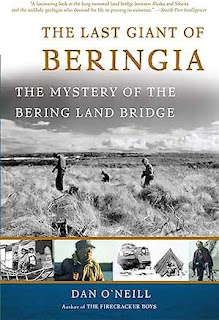Abstract
Do you love to cook? Do you have a passion for sharing your recipes with others? If so, then starting your own food channel could be the perfect way to combine your two loves.
In this article, we will walk you through the steps on how to start your own food channel, demonstrating recipes in your own home. We will cover everything from choosing a niche to filming and editing your videos.
We will also provide tips on how to promote your channel and get your videos seen by more people.
So if you're ready to start sharing your love of cooking with the world, then read on!
Here are some of the key points that we will cover in the article:
* How to choose a niche for your food channel
* How to film and edit your videos
* How to promote your channel
* How to be patient and persistent
We hope that this article will help you to start your own successful food channel. So what are you waiting for? Get cooking!
Book:Navigating the Foodservice Channel: A Guide to Understanding the Foodservice Business: https://amzn.to/3r32ofw
Book: Mind Your Business: A Workbook to Grow Your Creative Passion Into a Full-time Gig: https://amzn.to/46ti4ZR
Cooking with Love from Home
Introduction
Do you love to cook? Do you have a passion for sharing your recipes with others? If so, then starting your own food channel could be the perfect way to combine your two loves.
In this article, we will walk you through the steps on how to start your own food channel, demonstrating recipes in your own home. We will cover everything from choosing a niche to filming and editing your videos.
Content Creators Essentials: Movo iVlogger Vlogging Kit for iPhone - Lightning Compatible Video Vlog Kit - Accessories: Phone Tripod, Phone Mount, LED Light and Shotgun Microphone - for YouTube Starter Kit or iPhone Vlogging Kit:https://amzn.to/4455NJn
Step 1: Choose a niche
The first step is to choose a niche for your channel. This will help you to focus your content and attract a specific audience. Some popular niches for food channels include:
* **Regional cuisine:** This could include cooking dishes from a specific country, region, or city.
* **Dietary restrictions:** This could include channels that focus on gluten-free, vegan, or paleo recipes.
* **Cooking style:** This could include channels that focus on comfort food, healthy cooking, or international cuisine.
Once you have chosen a niche, you can start to brainstorm ideas for recipes that you can share on your channel.
Step 2: Film and edit your videos
Once you have some recipes in mind, it's time to start filming your videos. Here are a few tips for filming your videos:
* Use good quality equipment. This doesn't mean that you need to spend a fortune, but you should have a camera that can record in high definition.
* Set up your space. Make sure that your kitchen is clean and organized, and that you have enough space to move around.
* Be yourself. The most important thing is to be yourself and have fun. People will be able to tell if you're not genuine, so just relax and enjoy the process.
Once you have filmed your videos, you will need to edit them. This includes cutting out any unnecessary footage, adding music, and adding titles and captions.
Step 3: Promote your channel
Once you have created some videos, it's time to start promoting your channel. Here are a few tips for promoting your channel:
* Share your videos on social media. This is a great way to reach a wider audience.
* Optimize your channel for search. This means using relevant keywords in your video titles and descriptions.
* Collaborate with other food bloggers or YouTubers. This is a great way to get exposure to their audience.
Step 4: Be patient and persistent
It takes time and effort to build a successful food channel. Don't get discouraged if you don't see results overnight. Just keep creating great content and promoting your channel, and eventually you will start to see success.
Conclusion
Starting your own food channel can be a lot of fun, and it's a great way to share your love of cooking with others. If you follow the steps in this article, you'll be well on your way to creating a successful food channel.
Here are some additional tips for starting a food channel
* **Practice makes perfect.** The more you film and edit videos, the better you will become at it.
* **Don't be afraid to experiment.** Try different things and see what works best for you.
* **Have fun!** If you're not having fun, it will show in your videos. So relax, enjoy the process, and let your personality shine through.












